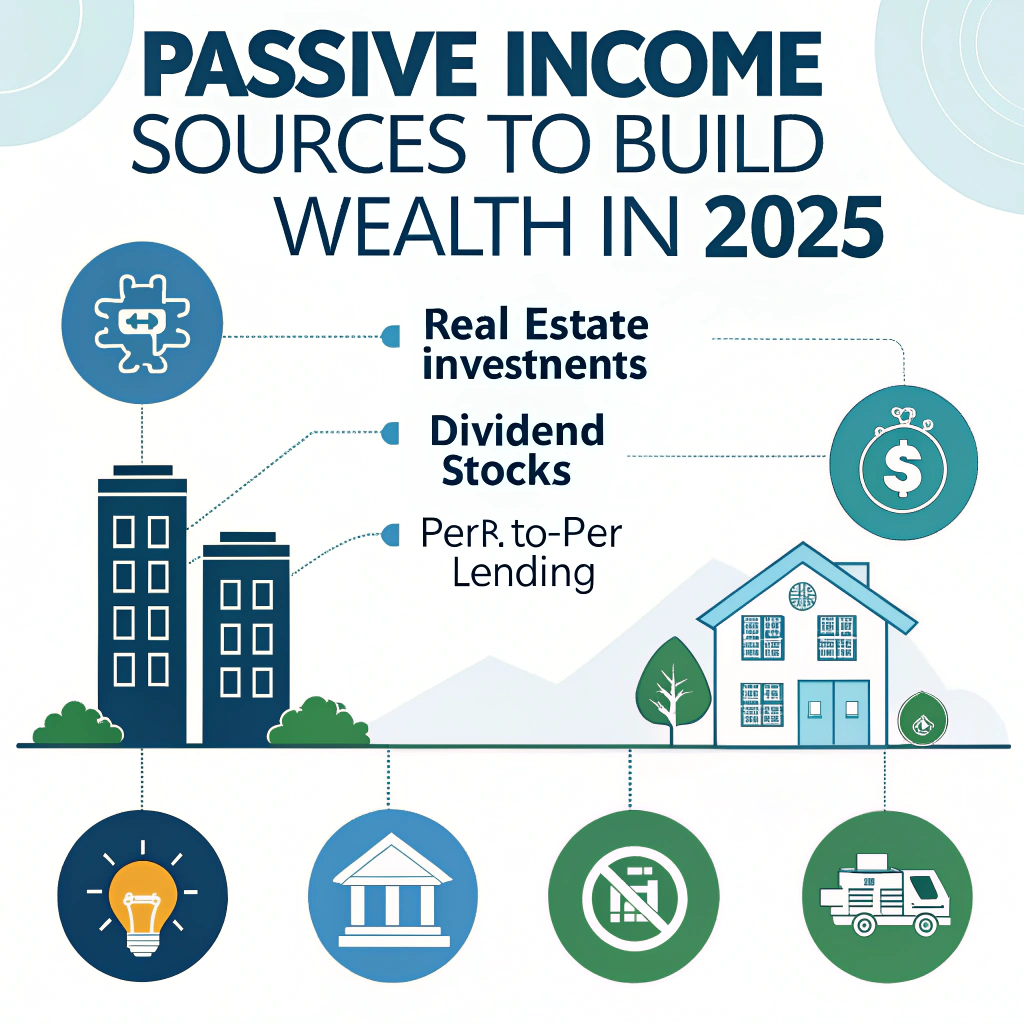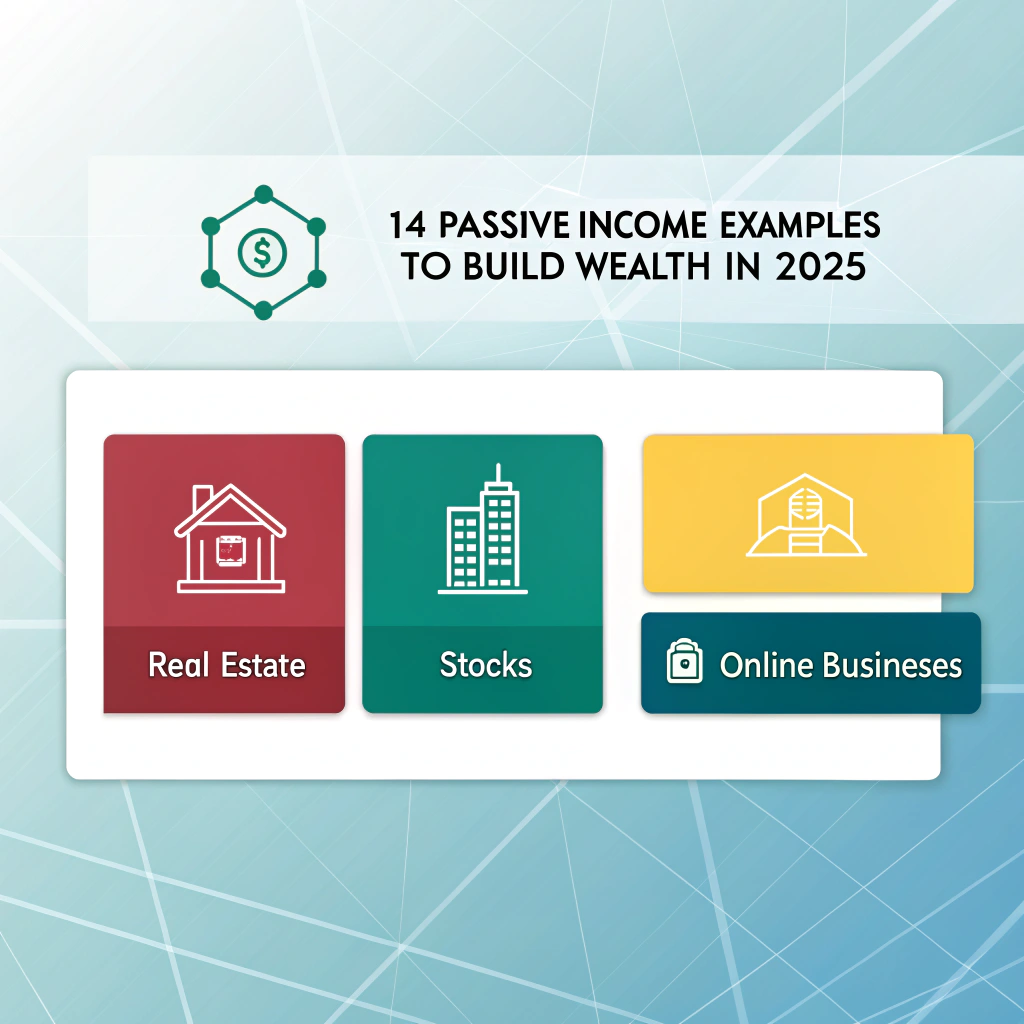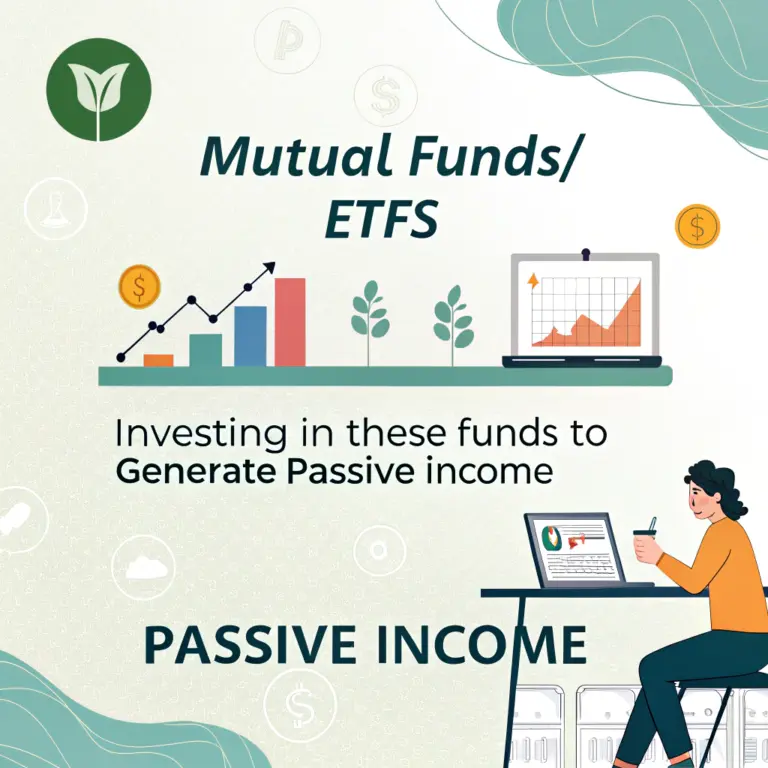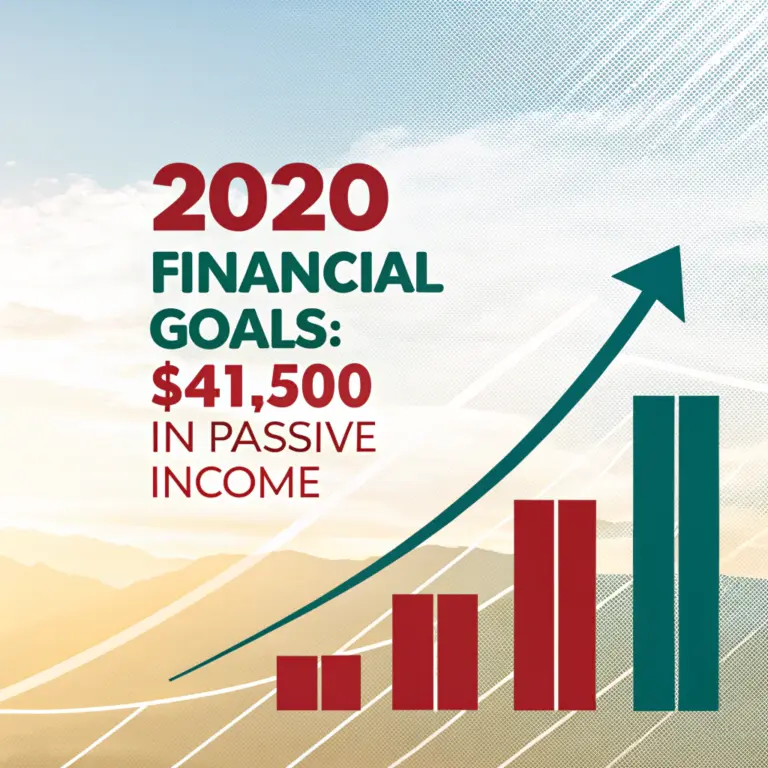
14 Passive Income Examples to Build Wealth in 2025
Unlock 2025’s Potential: 14 Passive Income Streams to Build Your Wealth Empire!
In the ever-evolving landscape of personal finance, passive income streams have emerged as a powerful tool for building wealth. As we look ahead to 2025, the opportunities for generating passive income are more diverse and accessible than ever before. From traditional methods like real estate and dividend stocks to innovative digital avenues such as cryptocurrency and online courses, there are numerous ways to create a steady flow of income with minimal ongoing effort. This introduction explores 14 passive income examples that can help you build wealth in 2025, leveraging both time-tested strategies and cutting-edge technologies.
Top Passive Income Strategies for Financial Freedom in 2025
In the pursuit of financial freedom, passive income strategies have long been a cornerstone for wealth accumulation. As we look ahead to 2025, the landscape of passive income opportunities continues to evolve, offering a diverse array of options for savvy investors. To begin with, one of the most traditional and reliable methods is investing in dividend stocks. Companies that distribute a portion of their profits to shareholders provide a steady stream of income, often with the potential for capital appreciation over time. This strategy is particularly appealing for those seeking long-term growth and stability.
Transitioning to the real estate sector, rental properties remain a robust source of passive income. Whether through residential or commercial properties, rental income can generate substantial returns, especially in high-demand areas. Moreover, Real Estate Investment Trusts (REITs) offer a more hands-off approach, allowing investors to benefit from real estate without the direct management responsibilities. REITs pool funds from multiple investors to acquire and manage properties, distributing profits as dividends.
In the digital age, peer-to-peer lending platforms have emerged as a viable passive income strategy. These platforms connect borrowers with investors, offering competitive returns while bypassing traditional banking intermediaries. Similarly, high-yield savings accounts and certificates of deposit (CDs) provide a low-risk, albeit lower-return, option for passive income. These financial instruments are ideal for those prioritizing capital preservation and liquidity.
For those with a creative bent, royalties from intellectual property can be a lucrative passive income source. Creating and licensing content such as books, music, or software can generate ongoing revenue. Additionally, affiliate marketing allows individuals to earn commissions by promoting other companies’ products. This strategy is particularly effective for those with a strong online presence or niche expertise.
Cryptocurrencies and blockchain technology present new avenues for passive income. Staking and yield farming enable investors to earn rewards by holding and locking up their digital assets. While these methods carry higher risks, they also offer the potential for significant returns. Furthermore, the rise of decentralized finance (DeFi) platforms provides additional opportunities for passive income through lending and liquidity provision.
Investing in index funds or exchange-traded funds (ETFs) offers a diversified approach to passive income. These investment vehicles track market indices, providing broad market exposure and the potential for steady returns. For those interested in more active yet still passive strategies, automated trading systems and robo-advisors can manage portfolios with minimal human intervention.
Lastly, investing in bonds, both corporate and government, provides a stable source of passive income through regular interest payments. While bond yields may be modest, they offer a reliable income stream with relatively low risk.
In conclusion, the path to financial freedom in 2025 is paved with a multitude of passive income strategies. From traditional methods like dividend stocks and rental properties to innovative approaches like DeFi and automated trading, there are numerous avenues to explore. By diversifying across these strategies, investors can build a robust portfolio that generates consistent passive income, paving the way for long-term wealth accumulation and financial independence.
Diversifying Your Income: 14 Passive Income Streams to Explore by 2025

In the ever-evolving financial landscape, the importance of diversifying income streams cannot be overstated. As we approach 2025, exploring passive income opportunities becomes increasingly vital for building wealth and securing financial stability. Passive income, which requires minimal effort to maintain, offers a reliable way to supplement your earnings and hedge against economic uncertainties. Here, we delve into 14 passive income examples that could significantly enhance your financial portfolio by 2025.
Firstly, consider investing in dividend stocks. These are shares in companies that distribute a portion of their profits to shareholders. By selecting stable, high-yield dividend stocks, you can generate a steady stream of income with minimal ongoing effort. Similarly, investing in real estate investment trusts (REITs) allows you to own a piece of income-producing real estate without the hassle of managing properties directly. REITs pool funds from multiple investors to purchase and manage properties, distributing the rental income as dividends.
For those interested in real estate but prefer a more hands-on approach, rental income from investment properties can be a lucrative passive income stream. Purchasing properties to rent out can provide a steady cash flow, although it may require more initial capital and management effort. Alternatively, peer-to-peer lending platforms offer another avenue for passive income. These platforms connect investors with borrowers, allowing you to earn interest on your investments without the need for traditional banking intermediaries.
In the digital age, creating and monetizing online content has become a popular passive income strategy. Starting a blog or YouTube channel can generate revenue through advertising, affiliate marketing, and sponsored content. While initial setup and content creation require effort, the potential for long-term passive income is substantial. Additionally, creating and selling digital products such as e-books, online courses, or printables can provide a continuous income stream with minimal ongoing work.
Another digital avenue to explore is investing in cryptocurrencies. While volatile, cryptocurrencies like Bitcoin and Ethereum have shown significant potential for growth. Staking and yield farming are passive income strategies within the cryptocurrency realm, where you can earn interest or additional tokens by holding and locking your cryptocurrencies in designated platforms. However, it’s crucial to conduct thorough research and understand the risks involved.
For a more traditional approach, consider investing in bonds. Government and corporate bonds offer fixed interest payments over a specified period, providing a stable and predictable income stream. Moreover, investing in index funds or exchange-traded funds (ETFs) can offer diversified exposure to the stock market with lower risk compared to individual stocks. These funds track market indices and provide passive income through dividends and capital appreciation.
If you have expertise in a particular field, creating a membership site or subscription service can be a valuable passive income source. By offering exclusive content, resources, or tools to subscribers, you can generate recurring revenue. Similarly, licensing your intellectual property, such as patents, trademarks, or copyrighted materials, can provide passive income through royalties.
Investing in a high-yield savings account or certificate of deposit (CD) is another low-risk option for passive income. These accounts offer higher interest rates compared to traditional savings accounts, allowing your money to grow over time with minimal effort. Additionally, investing in crowdfunding platforms can provide passive income by supporting startups or small businesses in exchange for equity or interest payments.
Lastly, consider renting out assets you already own. Renting out a room in your house through platforms like Airbnb can generate passive income with minimal effort. Similarly, renting out storage space, equipment, or vehicles can provide additional income streams. By leveraging your existing assets, you can create passive income opportunities without significant initial investment.
In conclusion, diversifying your income streams through passive income opportunities is a strategic approach to building wealth by 2025. From investing in dividend stocks and real estate to creating digital content and exploring cryptocurrencies, the options are vast and varied. By carefully selecting and managing these passive income streams, you can secure a stable financial future and achieve your wealth-building goals.
Building Wealth Through Passive Income: 14 Examples for the Future
In the ever-evolving financial landscape, the concept of passive income has gained significant traction. As we look ahead to 2025, the opportunities to build wealth through passive income are more diverse and accessible than ever. Passive income refers to earnings derived from enterprises in which a person is not actively involved. This approach allows individuals to generate revenue without the need for constant oversight, thereby freeing up time for other pursuits.
One of the most traditional and reliable forms of passive income is investing in the stock market. Dividend stocks, in particular, offer a steady stream of income through regular payouts. By selecting companies with a strong track record of dividend growth, investors can build a portfolio that generates consistent returns. Moreover, the advent of robo-advisors and automated trading platforms has made stock market investing more accessible and less time-consuming.
Real estate investment trusts (REITs) provide another avenue for passive income. REITs allow investors to own shares in income-producing real estate without the hassle of managing properties directly. These trusts distribute a significant portion of their income to shareholders, making them an attractive option for those seeking stable returns. Additionally, the rise of crowdfunding platforms has democratized real estate investing, enabling smaller investors to participate in large-scale projects.
Peer-to-peer lending has emerged as a innovative way to generate passive income. Platforms like LendingClub and Prosper connect borrowers with investors, offering competitive returns. While there is an element of risk involved, diversifying investments across multiple borrowers can mitigate potential losses. As the gig economy continues to grow, peer-to-peer lending is poised to become an even more prominent player in the passive income arena.
Creating and monetizing digital content is another burgeoning field for passive income. Blogs, YouTube channels, and podcasts can generate revenue through advertising, sponsorships, and affiliate marketing. Although initial setup and content creation require effort, the potential for long-term earnings is substantial. As digital consumption increases, the demand for quality content will only grow, presenting lucrative opportunities for creators.
E-commerce and dropshipping offer additional avenues for passive income. By setting up an online store and partnering with suppliers who handle inventory and shipping, entrepreneurs can generate sales without holding physical stock. Automated tools and platforms like Shopify make it easier than ever to manage an online business with minimal effort. The rise of artificial intelligence and machine learning is expected to further streamline these processes, enhancing the potential for passive earnings.
Investing in cryptocurrencies and blockchain technology presents another exciting opportunity. While volatile, cryptocurrencies like Bitcoin and Ethereum have shown significant growth potential. Staking and yield farming are passive income strategies within the crypto space, allowing investors to earn interest or additional tokens by holding their assets in designated wallets or platforms. As blockchain technology matures, these methods are likely to become more mainstream.
Rental income from traditional real estate remains a staple of passive income strategies. Owning rental properties can provide a steady stream of revenue, especially in high-demand areas. The rise of short-term rental platforms like Airbnb has also opened up new possibilities for property owners. By leveraging technology and outsourcing management tasks, landlords can minimize their active involvement while maximizing returns.
High-yield savings accounts and certificates of deposit (CDs) offer a low-risk way to generate passive income. These financial instruments provide guaranteed returns, making them ideal for risk-averse investors. As interest rates fluctuate, it’s essential to shop around for the best offers and consider locking in rates for longer terms to maximize earnings.
Royalties from intellectual property, such as books, music, and patents, can also serve as a source of passive income. Creating a valuable asset that generates ongoing revenue can be highly rewarding. With the rise of self-publishing platforms and digital marketplaces, it’s easier than ever to distribute and monetize creative works.
Investing in index funds and exchange-traded funds (ETFs) provides a diversified approach to passive income. These funds track market indices and offer broad exposure to various sectors, reducing the risk associated with individual stocks. Automated investment platforms make it simple to set up regular contributions and rebalance portfolios, ensuring a hands-off approach to wealth building.
Affiliate marketing allows individuals to earn commissions by promoting other companies’ products. By creating valuable content and driving traffic to affiliate links, marketers can generate passive income. The growth of e-commerce and digital marketing tools has made affiliate marketing more accessible and profitable.
Developing and selling digital products, such as e-books, online courses, and software, can also be a lucrative passive income strategy. Once created, these products can be sold repeatedly with minimal ongoing effort. The rise of online learning platforms and digital marketplaces has created a robust ecosystem for digital product creators.
Finally, investing in bonds, both corporate and government, offers a stable source of passive income. Bonds provide regular interest payments and are generally considered lower-risk investments. As economic conditions evolve, bonds can serve as a reliable component of a diversified passive income portfolio.
In conclusion, the landscape of passive income opportunities in 2025 is rich and varied. From traditional investments like stocks and real estate to innovative strategies like cryptocurrencies and digital content creation, there are numerous ways to build wealth without active involvement. By diversifying investments and leveraging technology, individuals can create a robust passive income stream that supports their financial goals and lifestyle aspirations.Passive income streams will continue to be a vital strategy for building wealth in 2025. Examples such as dividend stocks, real estate investment trusts (REITs), peer-to-peer lending, high-yield savings accounts, and index funds offer stable returns with minimal effort. Digital assets like cryptocurrencies and NFTs present high-risk, high-reward opportunities. Online businesses, including affiliate marketing, dropshipping, and print-on-demand, leverage e-commerce growth. Content creation through blogs, YouTube channels, and podcasts can generate ad revenue and sponsorships. Rental income from properties and vacation homes remains lucrative. Lastly, investing in bonds, creating digital products, and participating in crowdfunded real estate projects provide diverse avenues for passive income. By diversifying across these examples, individuals can build a robust portfolio to achieve financial independence.



